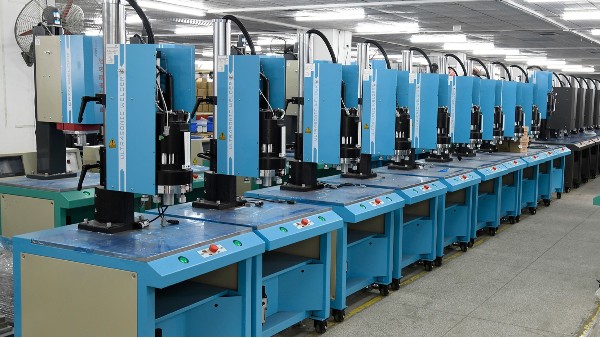The Application and Advantages of Ultrasonic Welding in Nonwoven Fabric Welding
As a multi-functional material, nonwoven fabric is widely used in many fields such as medical care, hygiene, packaging, agriculture, and clothing. During its production and processing, the choice of welding technology directly affects the quality and performance of the product. Traditional nonwoven fabric welding methods, such as hot melting and adhesive bonding, have certain limitations. For example, hot melting may affect the physical properties of the material, and adhesives may affect environmental protection and have insufficient bonding strength. Ultrasonic welding technology, as an efficient, clean, and reliable connection method, has gradually been widely used in the welding of nonwoven fabrics. This article will detail the application of ultrasonic welding technology in nonwoven fabric welding and its multiple advantages.

Advantages of Ultrasonic Welding
Pollution-free welding: Ultrasonic welding does not require the use of any solder or chemicals, avoiding the pollution of nonwoven fabrics by chemical residues, ensuring the production of nonwoven fabrics in a sterile environment, and meeting environmental protection and safety standards.
Fast welding speed: The ultrasonic welding process is very rapid and can usually be completed within a few seconds. It is suitable for automated production lines in large-scale production, improving production efficiency and reducing production costs.
High welding strength: The frictional heat generated by high-frequency vibration melts the material and then cools and solidifies. The formed welding point has high strength and can withstand large mechanical stresses and friction during daily use, ensuring that nonwoven fabric products are not prone to cracking or loosening during use.
Application examples of ultrasonic welding machines in nonwoven fabric welding:
Welding of surgical gowns:
Cuffs and collars: The cuffs and collars of surgical gowns need to be firmly sealed. Ultrasonic welding can be used to weld and close the cuffs and collars to ensure the sealing and comfort of the seals.
Seams: The seams of surgical gowns need to be firmly connected. Ultrasonic welding can be used to weld the seams together to ensure the sealing and firmness of the seams.
Welding of sanitary napkins:
Absorption layer and back layer: The absorption layer and back layer of sanitary napkins need to be firmly connected. Ultrasonic welding can be used to weld the absorption layer and back layer together to ensure the sealing and comfort of the connection.
Flap fixation: The flaps of sanitary napkins need to be firmly fixed on the back layer. Ultrasonic welding can be used to fix the flaps on the back layer to ensure the stability and sealing of the flaps.
Welding of protective clothing:
Seams: The seams of protective clothing need to be firmly connected. Ultrasonic welding can be used to weld the seams together to ensure the sealing and protective performance of the seams.
Zipper fixation: The zippers of protective clothing need to be firmly fixed on the clothing. Ultrasonic welding can be used to fix the zippers on the clothing to ensure the stability and sealing of the zippers.
Ultrasonic welding technology, with its characteristics of pollution-free, high efficiency, high strength, and good sealing performance, shows great application potential in nonwoven fabric welding. By adopting this advanced technology, it can not only improve the production efficiency and product quality of nonwoven fabric products but also better meet users' high requirements for the environmental protection and reliability of nonwoven fabric products. With the continuous development and improvement of technology, ultrasonic welding will play a more important role in nonwoven fabric manufacturing.

 Inquiry ()
Inquiry ()